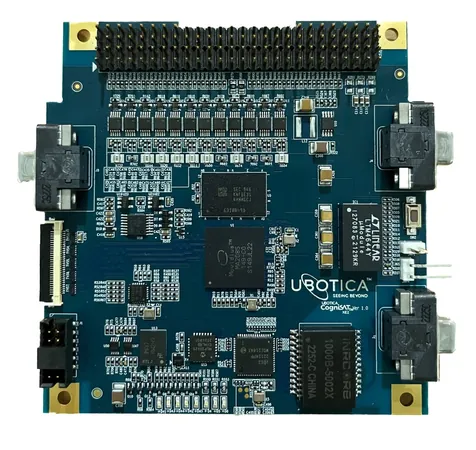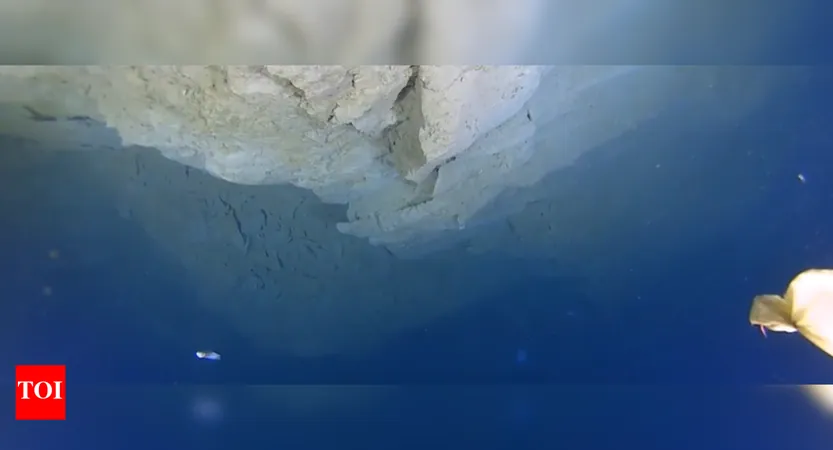
NASA's Groundbreaking AI Autonomy: How CogniSAT-6 is Changing Earth's Observation
2025-07-28
Author: Daniel
Revolutionizing Earth Observation with AI
Imagine a spacecraft that can think for itself! NASA's latest test with the CogniSAT-6 satellite is paving the way for autonomous Earth observation through cutting-edge artificial intelligence.
A Leap into the Future of Space Tech
Developed by the innovative Irish company Ubotica, the CogniSAT-6 integrates an AI payload that processes imagery at lightning speed—less than 90 seconds—without any human intervention. Powered by Ubotica’s SPACE:AI platform, this is a game-changer for on-orbit data processing.
Real-World Applications: Beyond Just Space
Ubotica's CEO, Fintan Buckley, believes this AI-driven autonomy could revolutionize everything from real-time wildfire detection to climate science and dark vessel tracking.
Dynamic Targeting: The AI Brain Behind the Operation
This is the first test of Dynamic Targeting, a sophisticated technology from NASA's Jet Propulsion Laboratory (JPL) that allows spacecraft to analyze terrain in real-time. The goal? To intelligently focus on valuable data while avoiding obstacles like cloud cover.
Steve Chien, JPL’s AI expert, explains, "We're teaching the spacecraft to interpret data like a human would, understanding the implications behind what it sees—like recognizing a fire rather than just a collection of pixels."
How Does It Work?
CogniSAT-6 employs a unique technique to look ahead, tilting its optical sensor to scan 40-50 degrees forward. In a dizzying speed—while traveling near 17,000 mph (7.5 kilometers per second)—the satellite’s Dynamic Targeting algorithm sifts through the acquired imagery to secure cloud-free views.
Clouds: The Great Obstacle
In this groundbreaking test, NASA focused on overcoming one of the biggest hurdles for Earth Observation: clouds, which can obscure sight two-thirds of the time. Dynamic Targeting gazes 300 miles (500 kilometers) ahead, discerning clear skies from clouds—allowing the satellite to focus only on the ground below during optimal conditions.
As Ben Smith from JPL puts it, "By strategically capturing images, we're enhancing the quality and usability of data researchers can access."
What Comes Next?
With cloud avoidance now mastered, the next phase will focus on severe weather tracking. Future tests will even turn the satellite's gaze toward wildfires and volcanic eruptions, utilizing specialized algorithms for each scenario.
Potential Beyond Earth
The applications of Dynamic Targeting aren't just limited to space; this technology could have significant terrestrial applications—like tracking rare weather phenomena that existing technologies struggle to observe. Upcoming concepts like the Federated Autonomous Measurement (FAME) will explore how this technology could communicate findings between satellites.
The rollout of Dynamic Targeting is not just a step forward; it's a massive leap into the future of Earth observation and satellite technology!




 Brasil (PT)
Brasil (PT)
 Canada (EN)
Canada (EN)
 Chile (ES)
Chile (ES)
 Česko (CS)
Česko (CS)
 대한민국 (KO)
대한민국 (KO)
 España (ES)
España (ES)
 France (FR)
France (FR)
 Hong Kong (EN)
Hong Kong (EN)
 Italia (IT)
Italia (IT)
 日本 (JA)
日本 (JA)
 Magyarország (HU)
Magyarország (HU)
 Norge (NO)
Norge (NO)
 Polska (PL)
Polska (PL)
 Schweiz (DE)
Schweiz (DE)
 Singapore (EN)
Singapore (EN)
 Sverige (SV)
Sverige (SV)
 Suomi (FI)
Suomi (FI)
 Türkiye (TR)
Türkiye (TR)
 الإمارات العربية المتحدة (AR)
الإمارات العربية المتحدة (AR)